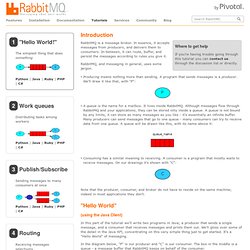

Theoretical Lucky Thirteen TLS Attacks Could Turn Practical. Lucky Thirteen: Breaking the TLS and DTLS Record Protocols. Introduction This page is about the security of RC4 encryption in TLS and WPA/TKIP.

For details of the Lucky 13 attack on CBC-mode encryption in TLS, click here. The Transport Layer Security (TLS) protocol aims to provide confidentiality and integrity of data in transit across untrusted networks like the Internet. It is widely used to secure web traffic and e-commerce transactions on the Internet. Around 50% of all TLS traffic is currently protected using the RC4 algorithm. We have found new attacks against TLS that allows an attacker to recover a limited amount of plaintext from a TLS connection when RC4 encryption is used. We have carried out experiments to demonstrate the feasibility of the attacks.
The most effective countermeasure against our attack is to stop using RC4 in TLS. One of the attacks also applies to WPA/TKIP, the IEEE's successor protocol to WEP. Part of our work was presented at USENIX Security 2013, Washington DC, USA, 14th-16th August, 2013. Who are we? Source code. Www.isg.rhul.ac.uk/tls/TLStiming.pdf. Keeping our users secure. As you may have read, there’s been a recent uptick in large-scale security attacks aimed at U.S. technology and media companies.

Within the last two weeks, the New York Times and Wall Street Journal have chronicled breaches of their systems, and Apple and Mozilla have turned off Java by default in their browsers. As a precautionary security measure, we have reset passwords and revoked session tokens for these accounts. If your account was one of them, you will have recently received (or will shortly) an email from us at the address associated with your Twitter account notifying you that you will need to create a new password. Your old password will not work when you try to log in to Twitter. Though only a very small percentage of our users were potentially affected by this attack, we encourage all users to take this opportunity to ensure that they are following good password hygiene, on Twitter and elsewhere on the Internet. Advanced Persistent Threat (APT) Attack & Zero-Day Protection. MongoDB Security Considerations. SSHv1 or SSHv2? What's the big deal? Choosing the right fishing bait is always a challenge for me.

Two baits may look the same, but they are as different as Popeye's chicken Vs. Mother in law's chicken. This is how it is with SSHv1 vs SSHv2. Choosing the wrong one is like sitting in all day long meeting on tax code law without doughnuts or an Internet connection. First off, let consider what SSH really does. . • Provides a secure client-server protocol that encrypts data during transmission over a network. • Offers strong authentication methods to ensure that the client and server are communicating with trusted hosts. • Prevents root access, which is typical of nonsecure network applications such as Telnet and FTP. • Is transparent to end users. • Includes, in commercial versions, and free open source options.
Many network admins switched over to SSHv1 instead telnet to take advantage these features. So the original code jockey (Tatu Ylönen) that wrote SSHv1 in 1995, scraped the entire protocol and started again. Jimmy Ray. Tutorial - "Hello World!" Introduction Where to get help If you're having trouble going through this tutorial you can contact us through the discussion list or directly.

RabbitMQ is a message broker. In essence, it accepts messages from producers, and delivers them to consumers. In-between, it can route, buffer, and persist the messages according to rules you give it. RabbitMQ, and messaging in general, uses some jargon. Note that the producer, consumer, and broker do not have to reside on the same machine; indeed in most applications they don't. "Hello World" (using the Java Client) In this part of the tutorial we'll write two programs in Java; a producer that sends a single message, and a consumer that receives messages and prints them out.
In the diagram below, "P" is our producer and "C" is our consumer. The Java client libraryRabbitMQ speaks AMQP, which is an open, general-purpose protocol for messaging. Now we have the Java client and its dependencies, we can write some code.